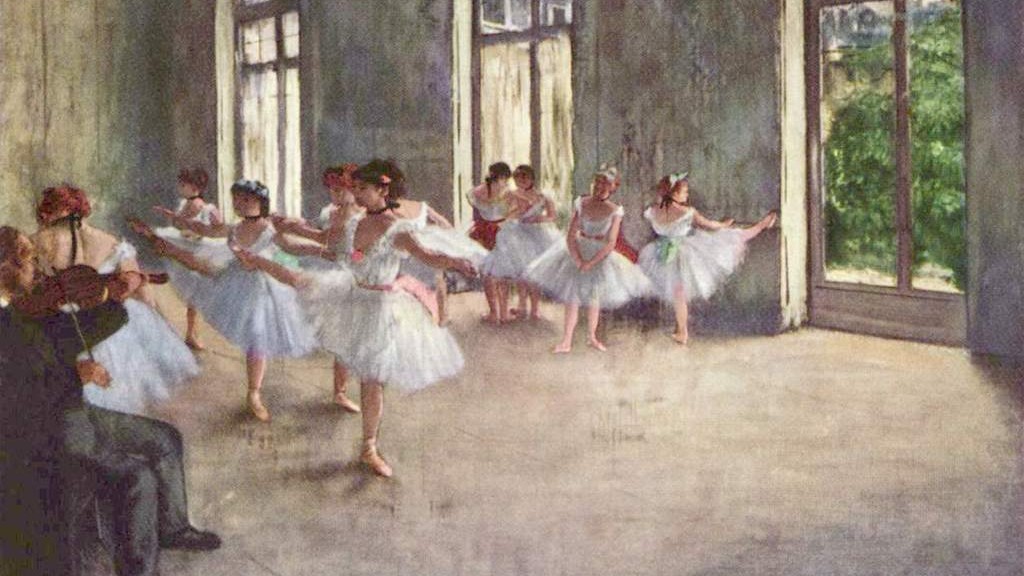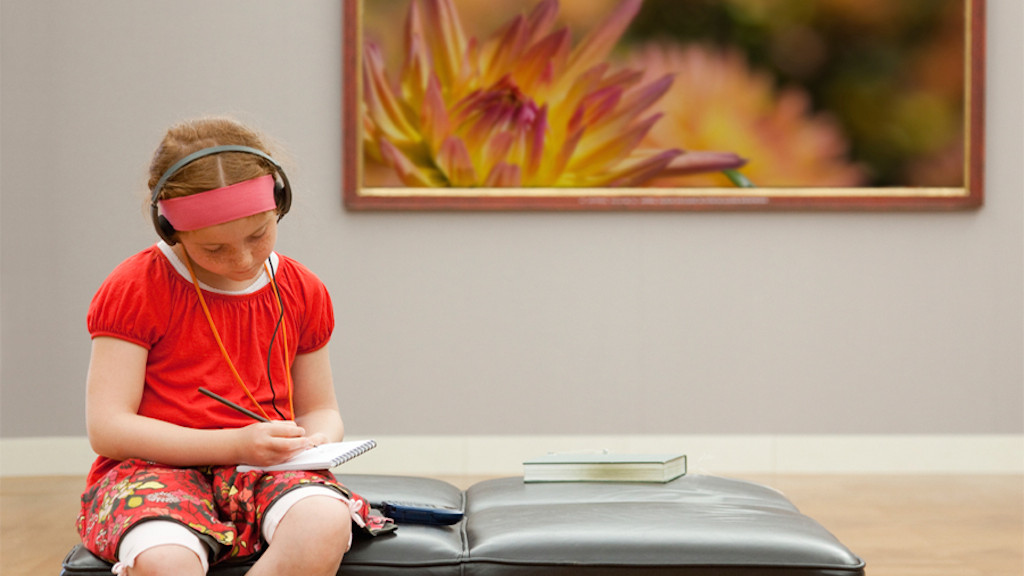
Tag Archives: London


Adventures in Art with Children: tell stories…but just a few | Sarah Palferman | Minerva London | Part 2
Sarah Palferman shares with us another feature on why art exhibitions are brilliant for young minds. Sarah has the gift to harness our children’s sponge-like minds to absorb and learn about art in the most interesting of ways. I cannot wait to take my children to London to expose them next summer to the galleries with Sarah.
“I never teach my pupils. I only attempt to provide the conditions in which they can learn” – Albert Einstein.
There are more than 850 art galleries in London. The city’s wealth of culture might, therefore, rather easily overwhelm even those of us who schedule furtive ‘gallery time’ into the working week. This is particularly true if you are a child and the very word “gallery” might render you instantly fatigued.
It has been argued that art exhibitions are no places for children and, while anyone whose contemplation of a sublimely silent Dutch interior has been shattered by the noisy protestations of young visitors being dragged round London’s National Gallery might agree, I do not.
Those noisy protestations are unnecessary. Done the right way, it is perfectly possible to engage young people with art so that their curiosities are sparked, their wonderfully sponge-like brains are stimulated … and they have fun!
Human beings are hardwired for stories. We have told them to each other since the dawn of time; we have written about them in literature from the Epic of Gilgamesh inscribed on clay tablets in ancient Sumer onwards; we depict them in music, theatre and dance; and we express them through visual art.
Behind so many canvases and sculptures lining the walls of London’s galleries lurk fascinating stories waiting to be discovered: scenes of scandal, war, revenge, love; canvases with their own tales of tragedy and fables of forgery; art that might or might not even qualify as art.
It is hard, for example, not to be moved by Waterhouse’s symbol-sprinkled and gorgeous depiction of the ill-fated Lady of Shalott, frozen in Tate Britain moments from her demise. The power of this tale to enthral is evident in the layers of inspiration from Arthurian legend through Tennyson’s poetry to Waterhouse’s paintbrush.
The National Gallery is heaving with portrayals of myth: Daphne mid-transformation into a laurel tree as an arboreal escape from the attentions of Apollo; Bacchus mid-leap from his chariot, struck by a coup de foudre on discovering the abandoned Ariadne; the Rokeby Venus mid-languid gaze at the viewer and fully recovered from her attack with a meat cleaver at the hands of a suffragette in 1914.
At the Courtauld Gallery skulks The Procuress, the subject of decades of speculation and revealed by clever modern investigative techniques to be the handiwork of a somewhat talented twentieth-century Dutch forger rather than of an early seventeenth-century painter of original creations, also Dutch.
Focusing on just a few pieces and exploring them together in depth is far better than parading children round vast rooms of great masterpieces and, even worse, telling them that these are ‘Great Masterpieces’. Research conducted in the USA 犀利士
over the past decade concluded that the study of the visual arts allows young people to explore ideas, realities and relationships that cannot be conveyed simply in words. Through visual stories, children can explore concepts beyond their own environments and appreciate alternative viewpoints. They are exposed to different cultural perspectives and social groups in entirely unthreatening circumstances. They can develop a sense of themselves in relation to others and the world they inhabit.
Captivating young imaginations with the stories behind art, and keeping each cultural encounter clearly focused so that repeat visits are begged, removes the danger of dissociation from artistic tradition that many children might experience. It endows them with a sense of wonder without the risk of paralysing awe, or even worse, scant interest. It allows them to see themselves as part of a cultural continuum, with the capacity to engage in a journey of discovery that will enrich their whole lives.
Sarah Palferman is a private tutor and educational advisor. She is the founder of Minerva London Ltd, offering tailored adventures in art and culture to young people in London.
To find out more, please visit
or email

Adventures in Art with Children: knowledge and thought | Sarah Palferman | Minerva London
Sarah Palferman established Minerva London to share her passion for culture and arts with young people of all ages and comes highly recommended from friends I know. She likes to inspire her pupils outside of the classroom to enrich their education and to teach them life skills by helping them to formulate their own opinions and ideas as this can only increase the children’s self-confidence and to broader their minds. Sarah developed this business on the back of an experienced history with children having worked for the last twenty years with children and young people on an individual or group basis using her background in education and psychology. You can spend the day with Dragons at the British Museum or find scenes from Shakespeare at Tate Britain. Sarah tells us in her own words more about how exposure to art can benefit your child. If you are in London this summer and looking for new activities for children, join Sarah and her team for one of their tours.
“The mind is not a vessel to be filled, but a fire to be ignited” – Plutarch
The quality of a child’s earliest encounters with culture is of paramount importance. A poor experience of anything can alienate the most open-minded among us. Done with sensitivity, however, an introduction to art offers the perfect opportunity for children to begin to formulate their own ideas and preferences, to develop skills of critical thought and self-expression, and to cultivate a livelong enjoyment in arts and the process of learning itself.
It is tempting to regale children with facts and figures in a gallery or museum; to focus on names and dates and a chronology of artistic movements. This is an almost sure-fire method for switching them off. That’s not to say that knowledge is unimportant. Knowledge, the logic that stitches facts into a meaningful fabric of understanding, provides context from which children can begin to explore concepts and ideas independently.
Teaser nuggets of fascinating fact provide the springboard from which we can encourage young people to think about what they are seeing. We can prompt with questions and withhold our own views to provide the space for children’s opinions and judgements to feel both valid and valued.
Children encountering Monet’s Antibes, billed by the artist as ‘sweetness itself’, and Degas’s Two Dancers, who have graced many a greetings card, will be startled by the fact that these works were once decried as ‘unfinished wallpaper’; the half-heated efforts of ‘lazy’ artists. Works by these radical rebels, admired by nearly 200,000 visitors annually in London’s Courtauld Gallery, are now revered in blockbuster exhibitions (such as that recently at the National Gallery and now to be found in the Philadelphia Museum of Art) for their spontaneity and the enchanting play of natural light.
Meeting Ophelia in Tate Britain (and the unfortunate model who may have caught the illness from which she perished while lying in a cold bath as Millais’ muse) serves as an introduction to the initially secretive Pre-Raphaelite Brotherhood. Therein lies scope for discussion of the potential clash between artistic realism and responsibility, framed by this group’s tackling of morally ambiguous subjects and the contemporary Victorians who reeled from them. Exploring moral dilemmas in art, as research shows, helps children to confront the challenges they encounter in their own lives.
Younger visitors to London’s galleries can find so much pleasure in such enigmatic works as Holbein’s The Ambassadors with its spookily distorted skull, in exploring the weird and wacky installations of Tate Modern, and in identifying the saints of the National Gallery’s abundant Renaissance panels once they have been given some simple hagiographic keys with which to unlock these (and even further delight in augmenting their vocabularies with the word ‘hagiographic’!).
With an appreciation that every creative decision made by an artist is a deliberate and conscious act, children will develop a spirit of inquiry in their encounters with visual art. The skills of independent thought thus acquired help children to develop their personalities, abilities and imaginations. They encourage them to form a sense of their own identities and to express themselves fully. All these foster an interest in the process of learning itself and have a demonstrable influence on wider academic attainment.
There is enormous pleasure to be found in exploring culture with children; in watching curiosities spark into life and fanning the flames of creative and independent thought. Far from silently contemplative spaces for adults already initiated in the joys of cultural exploration, then, art galleries should be teeming with young people and open minds.
Sarah Palferman is a private tutor and educational advisor. She is the founder of Minerva London Ltd, offering tailored adventures in art and culture to young people in London.
To find out more, please visit
or email

NetMums | Hannah Barton, US/UK Mum tells us some of her favourite websites from around the world.
Hannah Barton is a mother I do admire, full of resources and ideas for her children – I love her enthusiasm and her ability to ‘get dirty’ with the children and to communicate with them at their level. She is an American friend who has lived in the UK for over 15 years with her husband, Foster, and their two gorgeous children, Malory and Callum. She is one of my go-to mums, giving great advice, and I have finally persuaded her to share some of her great advice with SOTP readers. Hannah is the first mum contributing to our new section called ‘NetMums’, which will allow us to share some online resources that we have discovered between us mums whether for pleasure or for practical survival.
As a mother of two who is typically working full time, but is currently enjoying some time at home with the children between jobs, I rely heavily on websites that help simplify family life, scratch an intellectual itch, and make me feel like a better/more organised/more thoughtful mother, wife and friend. I don’t have as much time as I would like to focus on researching to the nth degree every food or product that comes into our household, so I tend to follow websites and blogs of experts whose opinions I rate and trust. Sometimes it’s necessary to use their sound advice as a shortcut to making informed decisions.
WEBSITES FOR SORTING DAILY LIFE
Ocado
I will start with one that is the most obvious, as I find it is the biggest game changer for modern motherhood. Ocado (online grocer) stocks all of the products we use, has the widest range of organic and specialty food that I’ve come across in the UK, and has a super easy app so that I can sort the grocery order whilst on the train or in a taxi. I’m a stickler for organic, grass-fed, and earth friendly products, so this is a dream for me. It has all of the “health food” items and fancy ingredients for dinner parties that I can’t always find in the supermarket. It also includes the nutritional content and ingredients for every item, so I know exactly what I’m getting.
Amazon UK
This one is also completely obvious, but again, a game changer. For years I resisted joining Amazon Prime, holding fast to my “look what it’s doing to independent shops” speech, but I finally gave in after a mum from school talked me into it, and I’ve never looked back. For starters, Amazon Prime can ship most things in 24 hours. Let’s not kid ourselves – there will always be a Friday morning when I get up and realise both kids have a birthday party at the weekend and I don’t yet have a gift, the gift drawer is empty, my day is swamped, no way I’ll make it to the shops, etc. etc. GATZ! Amazon can sort it. Can’t beat that. I have to ship gifts to America, Switzerland, Dubai and Hong Kong regularly, so it’s a lifesaver.
BBC News
When working full time, I never have to think about my news source. I typically sit on a trading floor with multiple computer screens in front of me and tv screens along the walls, all barking the news at me all day long. During commutes to and from work, I can read my news source of choice. I used to find it relentless, but now that I am at home, I miss it. Because it used to be all around me, I wasn’t accustomed to making proper time for catching up on current events. I realised that I need the solution to be easy and subtle (one morning of the news on tv covering atrocities sent the children crying into the next room), so reading it on a phone or an iPad suits me best. I like the BBC, the Economist, the Huffington Post, and my local hometown newspaper sites. Push notifications are helpful for quick updates, as is following them on Twitter, but it can be overwhelming how many you receive, so I edit it down to what I want to see.
Not on the High Street
This website has handpicked the best small businesses that provide creative and well-made gifts and homewares. This is my go-to for thoughtful gifts, as most products can be personalised. You can communicate directly with the sellers for special requests and they can typically ship anywhere in the world. I also appreciate a gift when people can’t immediately guess where you’ve bought it. Nothing is worse than the “Oh, you got me those votives from the 4th floor of Peter Jones” look.
WEBSITES FOR PARENTING
Children’s School Website
It is nice feeling like you are up to date with what is happening at school and to feel like a part of the school community, which can be especially difficult for working parents and those that can’t regularly participate in the school run. I am incredibly grateful that our school has a terrific website, through which they post regular, meaningful updates that are actually useful for parents. It’s a terrific resource.
NHS
Every parent will have a moment in their lives with some sort of health scare, so I find the NHS website invaluable. In the middle of the night, when your child cries and you have that “dear God, is it teething or meningitis?” moment, you can quickly do a search through sleepy haziness and worry. The NHS website tends to actually be both useful and a trustworthy resource. Even if I didn’t live in the UK, I would still definitely carry on using this site. You can search by symptom and also by condition, which is quite useful for not only deciphering what the child might have, but also ruling out what they don’t have.
WEBSITES FOR INTEREST
Get the Gloss
Now is when I get to start indulging on things I actually find fun. Get the Gloss runs the full gamut of news on beauty, nutrition, exercise, work-life balance and what’s new topics, all of which I find helpful because it feels they are specifically targeted to my demographic. It has a terrific list of contributors, many of whom I follow individually, as they give advice I rate and are top specialists in their fields (beauty editors, nutritionists, trainers, psychologists). As I said before, I don’t have time to research everything as much as I would like, so this website perfectly whittles down all of the information for me to give me advice that I both enjoy and trust. I go to it when I’m looking for everything from what new skincare product to buy, to latest diet and exercise advice, to tips on banishing anxiety and managing stressful city life. It’s a great all-rounder. They send daily emails and I click on at least a few of the articles every day.
Refinery29
Originally focusing only on New York, it has since jumped over the pond to give Londoners the latest on fashion, beauty, wellness and entertainment news. It typically presents its articles in a list, for example: top restaurants for brunch, top high street knock-offs of runway fashion, top cocktail bars with a view, top restaurants for al-fresco dining, etc. I use it for new ideas of where to eat, drink and shop. As we have a lot of tourists who come to stay, it’s fun to stay on top of all of the new things happening in London. It helps me feel young and in-touch, two things I struggle with now that I’m not out on the town every night anymore.
GOOP
Think what you will of GP, this mother faces of the same challenges and concerns as any other mother would (albeit, on a different budget), but she happens to be surrounded by world’s top specialists in many areas that are important to me. For me, the most helpful articles from the site tend to be nutrition, exercise or children focused. For example: nutritious breakfast recipes for the whole family, deciphering the world of supplements, exercises you can do in your hotel room, pesticides in the foods that kids regularly eat, and great calming apps for children. She has the best people in the world looking after her family and personal health, so why not mooch off the intel?
WEBSITES FOR EXERCISE
The Body Coach
Joe Wicks is a genius. I found him on Get the Gloss and he has done some work with the nutrition ladies at Honestly Healthy. He has been featured recently in nearly every top UK publication and his first cookbook comes out next year. His 15-20 minute training sessions on YouTube helped me reach my goals faster than any other exercise regime I’ve ever done. It’s super quick and can be done at home with minimal equipment, so I can fit it into my day easily. Follow him Instagram to watch the transformations of his clients and to see his recipes. Let your new addiction begin! PS – he’s nice on the eyes too.
WEBSITES FOR SHOPPING
My kids don’t wear uniforms at their school, which has its pros and cons. I tend to save their nice clothes for the weekends, as their weekday clothes get destroyed rather quickly. No sense in big investments here. H&M is brilliant, as it’s cheap, cute, relatively well made and convenient. We buy lots of our basics here. Crew Cuts (J Crew’s line for children) is terrific. It’s sweet, but not overly preppy, and the graphics are tasteful. I also love Ralph Lauren for its cotton jumpers. They are practically indestructible. You can pretty much boil them and they will retain their shape and colour, always looking smart.
For me: I tend to do most of my online fashion shopping on J Crew and Tory Burch, then Donna Ida for denim.
J CREW
As an American, I’ve been shopping at J Crew since my teens. It has come such a long way since then. Their website is brilliant and the emails are full of terrific styling ideas. I am almost a bit sad that they have gone global. It was a glorious little secret while it lasted.
Tory Burch
I love Tory Burch for a number of reasons: the brand makes lovely pieces for both work and weekends, people in London don’t recognise it yet, it gets me out of the LK Bennett/Reiss uniform rut that women in the workplace are stuck in here, and because everything they make fits me well without needing alterations, which is rare for me. I don’t have to rush to a shop to try it on first.
Donna Ida
Several of my favourite stateside websites for buying denim have recently closed, so I’ve had to find something reliable in the UK. This shop carries nearly all of the top brands, but in a way that isn’t terribly overwhelming. The Denim Clinic buying guide on the website is really helpful when trying to find the most flattering fit for your shape, but it’s really the Compare List facility on the website that makes denim buying so much easier. Just tick your favourites and then see all of their measurements, fit and review stats one page to help you make a decision. It saves trying on 33 pairs to finally find the perfect one.
